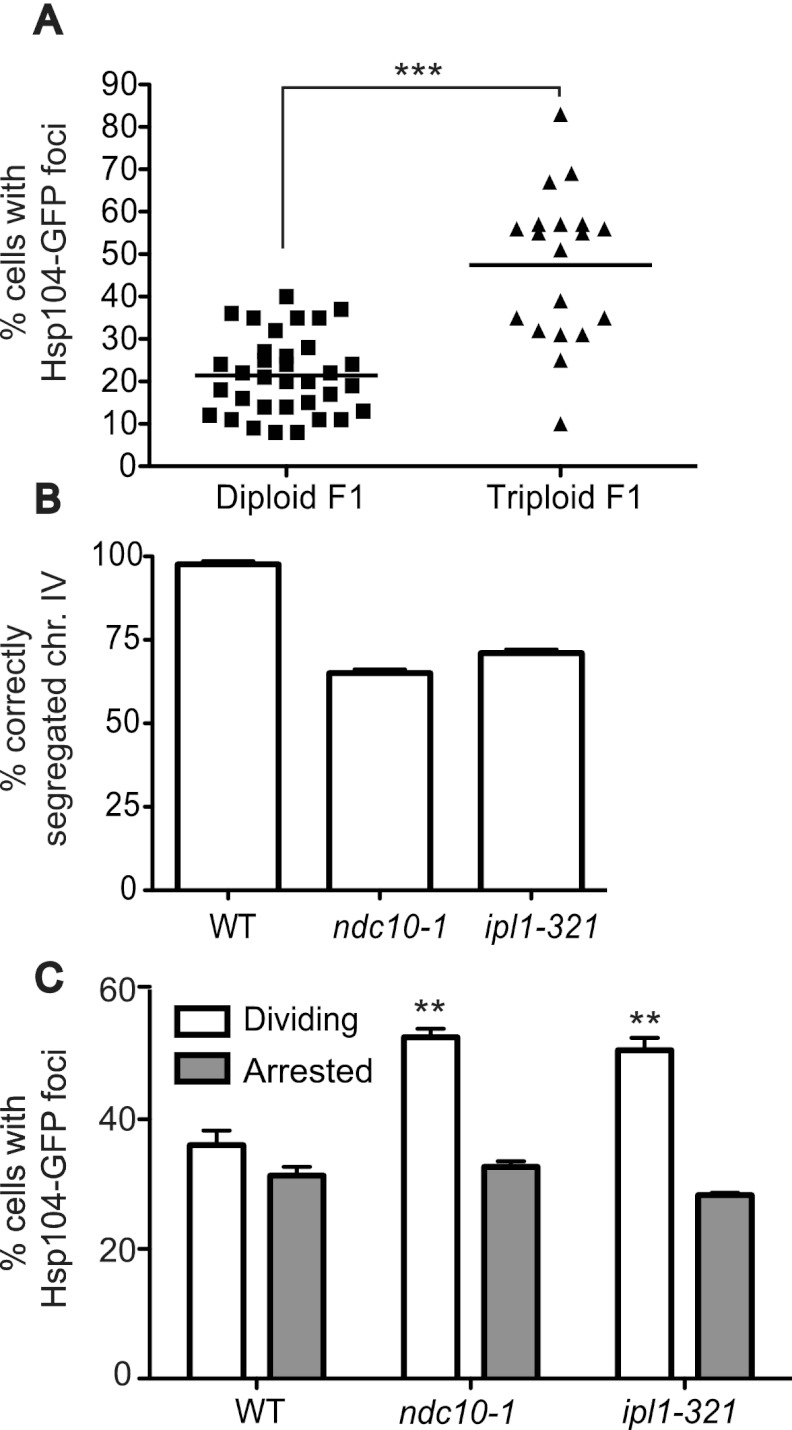Figure 3.
Meiotic and mitotic chromosome nondisjunction causes increased Hsp104-eGFP focus formation. (A) The percentage of cells with Hsp104-eGFP aggregates was analyzed in the progeny of diploid (A28220) or triploid (A28219) strains 3 d after germination. n = 100 cells per strain. Note that although many of the progeny from the triploid meioses will harbor multiple aneuploidies, some will also be euploid or will have become euploid as they proliferate. (B,C) Wild-type (WT) (A5244), ndc10-1 (A28204), and ipl1-321 (A16154) mutants harboring a GFP-marked chromosome IV, and wild-type (A25654), ndc10-1 (A27681), and ipl1-321 (A27682) mutants harboring Hsp104-eGFP were arrested in G1 with pheromone at 25°C, followed by release at 30°C in either the presence (10 μg/mL; Arrested) or absence (Dividing) of nocodazole. Samples were taken after 3 h to determine the percentage of cells that correctly segregated chromosome IV (B) and that harbored Hsp104-eGFP foci (C). We note that the temperature shift during this experiment may inflate the percentage of cells harboring aggregates in all strains, as they will be adapting to the temperature shift.

